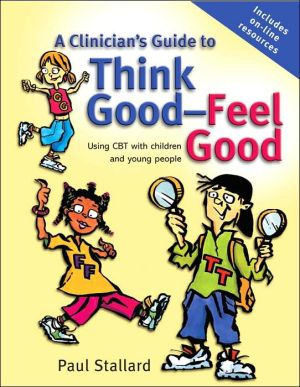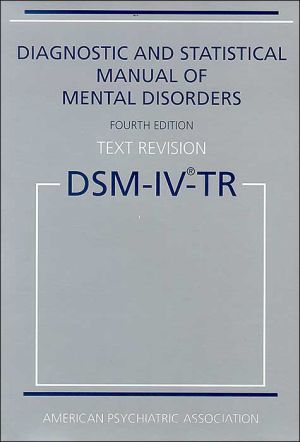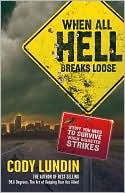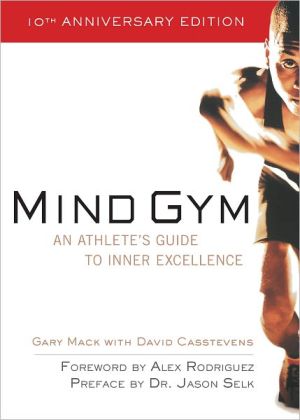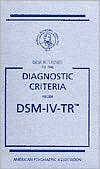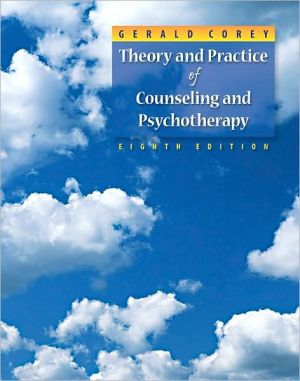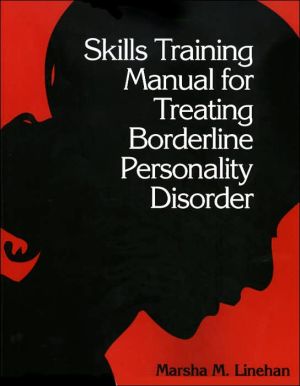A Clinician's Guide to Think Good-Feel Good: Using CBT with Children and Young People
This is a companion guide to Think Good Feel Good: A Cognitive Behaviour Therapy Workbook for Children and Young People. Designed for clinicians using the original workbook in their work with children, the book builds upon the workbook materials by offering guidance on all aspects of the therapeutic process and a range of case studies highlighting therapy in action. Topics covered include parent involvement, key cognitive distortions in children, formulations, challenging thoughts, guided...
Search in google:
Praise for Think Good–Feel Good ‘Highly Commended’ in the Mental Health category of the 2003 BMA Medical Book Competition ‘Think Good–Feel Good is a wonderful resource for practitioners undertaking cognitive behaviour therapy with children and young people … The materials promise to be an essential component of the toolbox of any child or adolescent CBT therapist, and deserve to become a key resource in training.’ Dr Rachel Calam, European Child and Adolescent Psychiatry This is a companion guide to the highly successful workbook Think Good–Feel Good: A Cognitive Behaviour Therapy Workbook for Children and Young People. Designed for clinicians using the original workbook in their work with children, this guide builds upon the practical materials in the workbook by looking at the process of undertaking child-focused CBT, including:engaging children in CBT and motivating themdeveloping an individual case formulationundertaking Socratic questioning and inductive reasoninghow best to involve parentseffective methods to use with children To supplement the workbook, this clinician’s guide offers further materials and handouts for use in therapy, including psychoeducational materials for children and parents. This is a must-have resource for child and adolescent mental health professionals wanting to use CBT with children. It will also be of interest to other health professionals working with children, such as social workers, school nurses, counsellors and health visitors.
About the author. Acknowledgements. On-line resources. 1 Overview. Engagement and readiness to change. Formulations. The Socratic process and inductive reasoning. Involving parents in child-focused CBT. The process of child-focused CBT. Adapting CBT for children. Core components of CBT programmes for internalising problems. 2 Engagement and readiness to change. Engaging with children. The Stages of Change. Motivational interviewing. When would CBT not be indicated? ‘The Scales of Change’. 3 Formulations. Key aspects of a formulation. Mini-formulations. General cognitive formulations. Onset formulations. Complex formulations. Problem-specific formulations. Common problems. ‘The Negative Trap’. ‘The 4-part Negative Trap’. ‘Onset Formulation Template’. 4 The Socratic process and inductive reasoning. Facilitating self-discovery. The structure of the Socratic process. Inductive reasoning. The Socratic process. The Socratic process and collaborative empiricism. What makes a good Socratic question? How does it work? Common problems. ‘The Chain of Events’. 5 Involving parents in child-focused CBT. The importance of involving parents. Clinical benefits of parental involvement. Model of change. The role of parents in child-focused CBT. Parental involvement. Common components of parent-focused interventions. Two final thoughts. ‘What is Cognitive Behaviour Therapy (CBT)?’ ‘What Parents Need to Know about Cognitive Behaviour Therapy (CBT)’. 6 The process of child-focused CBT. The therapeutic process of child-focused CBT. PRECISE in practice. 7 Adapting CBT for children. The cognitive capacity debate. Adapting CBT for use with children. Visualisation. ‘The Thought Tracker Quiz: What are the thinking errors?’ ‘Responsibility Pies’. ‘When I Feel Worried’. ‘When I Feel Angry’. ‘When I Feel Sad’. ‘Sharing our Thoughts’. 8 Core components of CBT programmes for internalizing problems. What is the balance between cognitive and behavioural strategies? Do we need to directly focus upon dysfunctional cognitions and processes? What cognitions or cognitive processes might be important? Does cognitive change result in problem improvement? Is CBT effective? What are the effective components of CBT interventions? Where is it best to start? How many treatment sessions are needed? What about home-based assignments? What are the core components of standardised CBT programmes? Psychoeducational materials. ‘Beating Anxiety’. ‘Fighting Back Depression’. ‘Controlling Worries and Habits’. ‘Coping with Trauma’. References. Index.
\ From the Publisher"...provides ideas to 'inform and facilitate' the clinical practice of child-focused cognitive behavioural therapy...the guide also has resources online..." (Children Now, 16th November 2005)\ \ \
